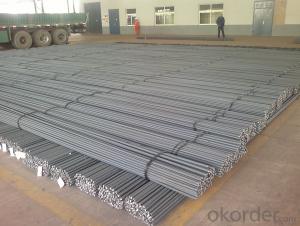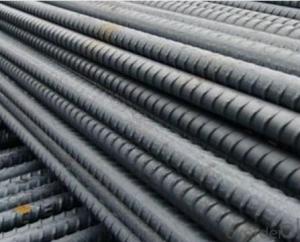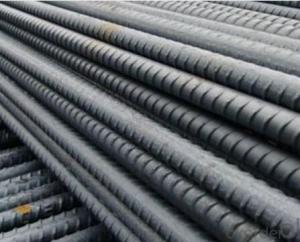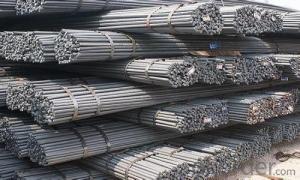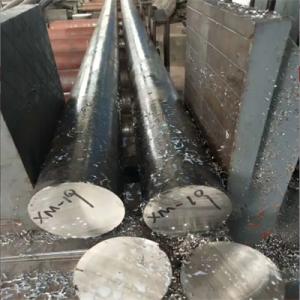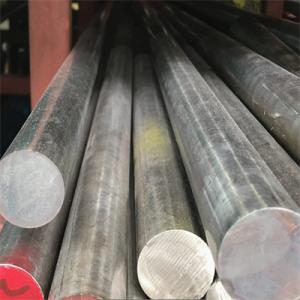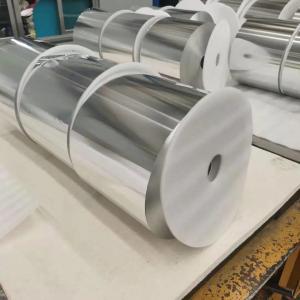Rebars for Concrete - Deformed Steel Bar, Iron Rods for Construction
- Loading Port:
- Tianjin
- Payment Terms:
- TT OR LC
- Min Order Qty:
- 24 m.t.
- Supply Capability:
- 23000 m.t./month
OKorder Service Pledge
OKorder Financial Service
You Might Also Like
REINFORCING DEFORMED STEEL BAR
ACORDING TO ASTM/BS/FEE/ EXTC....
LENGTH:ANY LENGTH
PLEASE SEND US YOUR REQUEST WITH FULL DETAILS FOR BEST OFFER
REINFORCING DEFORMED STEEL BAR
ACORDING TO ASTM/BS/FEE/ EXTC....
LENGTH:ANY LENGTH
Specifications
Certificates: CE & ISO9001:2000
Material: hrhrb400 ,hrb500, BS4449, ASTM A615, SD400
length:6-12
Size: 6mm-40mm
HRB 400E Hot rolled steel rebar
Type | steel rebar |
Standard Grade | a. GB1499.2-2007, HRB335, HRB400E, etc. |
b. ASTM A615 Gr.40, Gr.60, etc. | |
c. BS4449/1997, etc. | |
Diameter | 6mm-32mm etc. |
Length | 6m, 8m, 9m,12m as standard |
Application | construction industry with all types of reinforced concrete structures and so on |
Packing | standard export packing, or as per customers' requirement |
Quality | First quality |
Delivery time | Right now after the deposit. |
Others | 1. all the production process are made under the ISO 9001:2001 strictly |
2. our products conform to all the standards | |
3. we can offer special specification products as per our customers |
We are willing to establish long business relations with customers all over the world. Any comments and requirement will be appreciated. It is our big pleasure of serving you.
If you are interested in our products, please contact us for more information we can supply you with competitive price and good service.
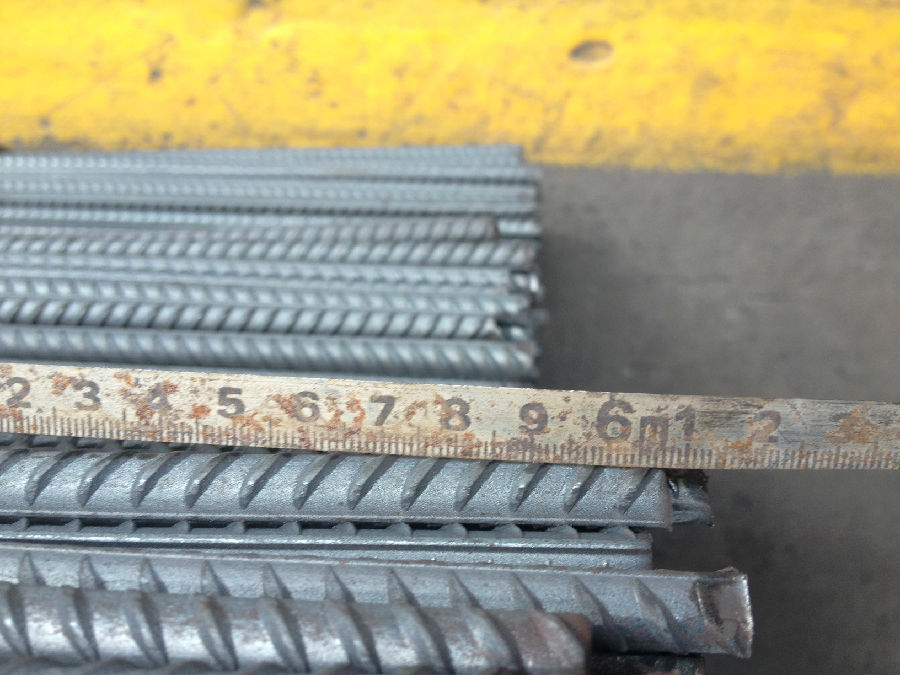

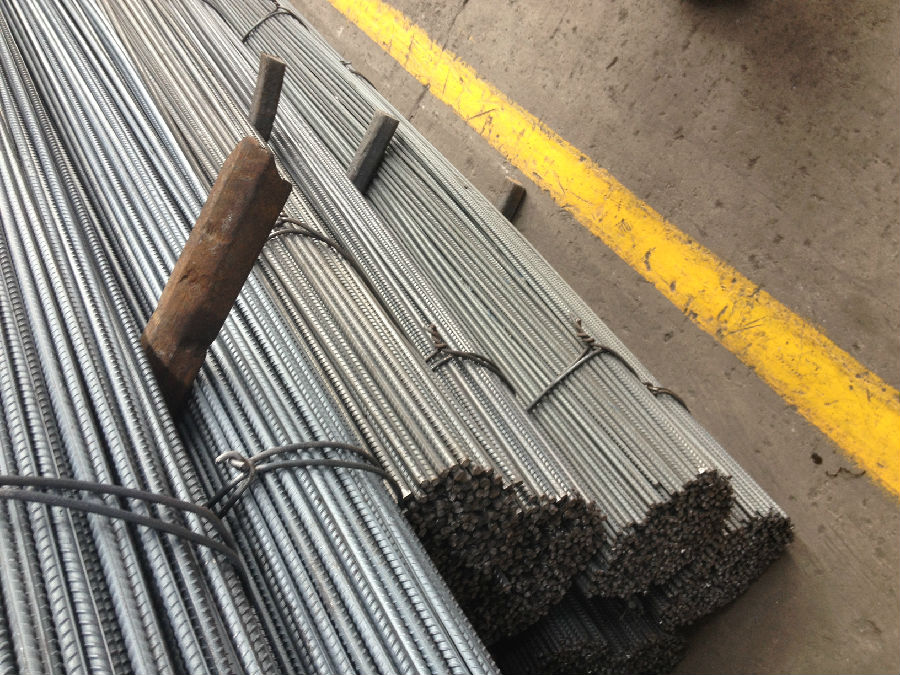
- Q:Can steel rebars be used in the construction of power plants or industrial facilities?
- Steel rebars can be utilized in the construction of power plants and industrial facilities due to their exceptional strength and durability. They are an ideal option for reinforcing concrete structures in these types of facilities. With their ability to provide necessary strength and support, they can withstand heavy loads, vibrations, and extreme temperatures that are frequently encountered in power plants and industrial facilities. Moreover, steel rebars possess resistance to corrosion, which is particularly vital in such environments where exposure to moisture, chemicals, and other harsh elements is commonplace. Consequently, steel rebars are widely employed in the construction of power plants and industrial facilities to guarantee the buildings' structural integrity and long-lasting nature.
- Q:How do steel rebars help in preventing cracks in concrete?
- Steel rebars help in preventing cracks in concrete by providing reinforcement and added strength to the structure. When concrete is poured, it is strong in compression but weak in tension. This means that it can withstand forces that push or compress it, but it is more susceptible to cracking under pulling or bending forces. Steel rebars are embedded within the concrete to counteract this weakness. The rebars act as a framework, distributing the tensile forces throughout the concrete, preventing cracks from forming and spreading. They reinforce the structure, making it more resistant to bending, shearing, and other external forces. Moreover, steel rebars help in preventing cracks by enhancing the overall structural integrity of the concrete. When concrete undergoes shrinkage during the drying and curing process, it tends to crack. However, with the presence of rebars, the tensile forces caused by shrinkage are absorbed by the steel, reducing or eliminating the formation of cracks. In addition, steel rebars can also prevent cracks in concrete by providing resistance against temperature changes and external loads. They help to control the expansion and contraction of the concrete due to temperature fluctuations, minimizing the risk of cracking. Furthermore, rebars reinforce the concrete against heavy loads, such as those caused by traffic or seismic activity, ensuring that the structure remains intact and crack-free. Overall, steel rebars play a crucial role in preventing cracks in concrete by reinforcing the material, distributing forces, absorbing tensile stresses, and enhancing structural integrity. Their presence significantly improves the durability and longevity of concrete structures, making them more resistant to cracking and ensuring their stability over time.
- Q:Are steel rebars suitable for use in sports stadiums and arenas?
- Yes, steel rebars are suitable for use in sports stadiums and arenas. Steel rebars are widely used in construction due to their excellent strength and durability properties. In sports stadiums and arenas, where large crowds gather, heavy loads are experienced, and safety is of utmost importance, steel rebars provide the necessary reinforcement to ensure structural integrity. They can withstand high tensile forces and resist bending, making them ideal for reinforcing concrete structures in stadiums and arenas. Additionally, steel rebars have a high resistance to fire, which is crucial in these large-scale public spaces. Overall, steel rebars are a reliable and proven choice for reinforcing sports stadiums and arenas, providing the necessary support and safety requirements.
- Q:What are the common mistakes to avoid when handling and storing steel rebars?
- When handling and storing steel rebars, it is important to avoid certain common mistakes to ensure their quality and longevity. Here are some mistakes that should be avoided: 1. Poor storage conditions: Storing steel rebars in damp or wet areas can lead to corrosion and rust. It is crucial to store them in a dry and well-ventilated space to prevent moisture accumulation. 2. Insufficient support: When stacking rebars, it is important to have proper support to prevent bending or deformation. Inadequate support can lead to rebar damage and compromise their structural integrity. 3. Improper lifting techniques: When handling rebars, it is essential to use proper lifting equipment and techniques. Using hooks or chains directly on the rebars can cause damage and weaken them. It is recommended to use lifting devices specifically designed for rebar handling. 4. Overloading: Avoid overloading storage racks or platforms with excessive weight. Overloading can cause structural failure and potentially injure workers. Always follow the manufacturer's guidelines for maximum weight capacity. 5. Lack of protection: Rebars should be protected from exposure to moisture, dirt, and other contaminants. Proper wrapping with plastic or waterproof covers can help prevent corrosion and maintain their quality. 6. Improper transportation: During transportation, care should be taken to secure the rebars properly to prevent movement or damage. Using appropriate restraints and padding can help prevent any potential accidents or rebar displacement. 7. Mixing different grades: Avoid mixing rebars of different grades together as they have varying strength and performance characteristics. Mixing different grades can compromise the overall structural integrity of the construction project. 8. Ignoring quality control: It is important to conduct regular quality checks on the rebars to ensure they meet the required specifications. Ignoring quality control can result in the use of substandard rebars, which can compromise the safety and durability of the structure. By avoiding these common mistakes, construction professionals can ensure the proper handling and storage of steel rebars, leading to safer and more durable structures.
- Q:Can steel rebars be used in power plant construction?
- Power plant construction can indeed utilize steel rebars. These rebars, also referred to as reinforcing bars, are frequently employed in the construction sector to provide concrete structures with strength and support. In power plant construction, it is common practice to reinforce concrete foundations, walls, and structural components like columns and beams with steel rebars. The remarkable tensile strength and durability of these rebars make them highly suitable for enduring the heavy loads and extreme conditions typically encountered in power plant environments. Additionally, steel rebars can enhance the overall strength and stability of power plant infrastructure by being employed in the construction of reinforcing cages for underground pipelines and cooling towers.
- Q:How are steel rebars protected against alkali attacks?
- Steel rebars are protected against alkali attacks by applying a protective coating or by using corrosion-resistant materials such as stainless steel rebars. Additionally, proper concrete mix design, including the use of low alkali cement and supplementary cementitious materials, can help mitigate alkali attacks on steel rebars.
- Q:Can steel rebars be used in earthquake-prone areas?
- Yes, steel rebars can be used in earthquake-prone areas. Steel rebars provide strength and reinforcement to concrete structures, making them more resistant to seismic activity. The ductility and high tensile strength of steel rebars allow them to absorb and distribute the energy generated during an earthquake, minimizing damage and ensuring the overall stability of the structure. Therefore, using steel rebars in construction is a common practice in earthquake-prone areas to enhance the seismic resistance of buildings and infrastructure.
- Q:How are steel rebars connected or joined together during construction?
- During construction, there are several methods and techniques for connecting steel rebars. One common method is to overlap the rebars and tie them together with steel wire, a process known as rebar tying or wire tying. To ensure a strong and secure connection, the rebars are overlapped at a length typically 40 to 60 times the diameter of the rebars. This overlapping length allows for load transfer and structural integrity. Once properly overlapped, steel wire is tightly wrapped around the intersection point to hold the rebars together. Another method is to use mechanical couplers, which are pre-fabricated devices that join two rebars together. These couplers provide a threaded connection, allowing for a more precise and efficient joining process. The rebars are inserted into the couplers and tightened using a wrench or appropriate tool. In larger construction projects, welding is also used to connect rebars. This involves melting the rebars at the intersection point and fusing them together with heat and pressure. Welding provides a strong and permanent connection but requires skilled labor and safety precautions. In some cases, rebars can be connected using epoxy bonding. This involves applying adhesive to the rebars' surface and pressing them together. The epoxy acts as a bonding agent, creating a durable connection. The method of connecting rebars depends on factors like rebars' size, project requirements, and construction techniques. It's important to follow industry standards and guidelines to ensure proper connection and integrity, as rebars play a critical role in reinforcing concrete structures.
- Q:How do steel rebars affect the constructability of complex architectural designs?
- Steel rebars play a crucial role in the constructability of complex architectural designs. These reinforced bars provide structural integrity and strength to concrete elements, making it possible to create intricate and innovative designs. Firstly, steel rebars allow architects to design structures with larger spans and heights, as they provide the necessary load-bearing capacity. This is particularly important in complex designs that involve cantilevers, soaring roofs, or suspended floors, as the rebars distribute the loads evenly and prevent structural failure. Moreover, steel rebars enhance the constructability of complex architectural designs by enabling the creation of slender and lightweight structures. Since rebars are strong and durable, they can be used to reinforce thin concrete elements, reducing the overall weight of the structure. This not only enhances the aesthetic appeal of the design but also minimizes the amount of material required, resulting in cost savings during construction. In addition, steel rebars offer flexibility during the construction process. They can be easily bent and shaped to match the intricate geometries and curves of complex architectural designs. This allows architects to realize their creative vision by incorporating unique and eye-catching elements into the structure. Furthermore, steel rebars contribute to the durability and longevity of complex architectural designs. By reinforcing the concrete, they increase its resistance to cracking, bending, and corrosion. This is especially important in areas prone to seismic activity or harsh weather conditions. The use of rebars ensures that the structure can withstand these challenges and remain intact over time. Overall, steel rebars significantly impact the constructability of complex architectural designs. Their strength, versatility, and ability to reinforce concrete elements make it possible to create innovative structures that are both visually appealing and structurally sound. Without the support of steel rebars, the construction of such complex designs would be much more challenging, if not impossible.
- Q:Can steel rebars be used in precast concrete?
- Indeed, precast concrete can make use of steel rebars. It entails fabricating concrete components away from the construction site and subsequently transferring them for installation. Generally, steel rebars are incorporated into precast concrete elements to furnish reinforcement and bolster the strength and resilience of the concrete structure. During the manufacturing process, these rebars are typically embedded inside the precast concrete elements, guaranteeing a cohesive interaction between the concrete and steel to counteract tensile forces and forestall cracks or structural failure. This amalgamation of steel rebars and precast concrete yields robust, dependable, and efficient construction elements that can be easily erected on-site.
1. Manufacturer Overview |
|
|---|---|
| Location | |
| Year Established | |
| Annual Output Value | |
| Main Markets | |
| Company Certifications | |
2. Manufacturer Certificates |
|
|---|---|
| a) Certification Name | |
| Range | |
| Reference | |
| Validity Period | |
3. Manufacturer Capability |
|
|---|---|
| a)Trade Capacity | |
| Nearest Port | |
| Export Percentage | |
| No.of Employees in Trade Department | |
| Language Spoken: | |
| b)Factory Information | |
| Factory Size: | |
| No. of Production Lines | |
| Contract Manufacturing | |
| Product Price Range | |
Send your message to us
Rebars for Concrete - Deformed Steel Bar, Iron Rods for Construction
- Loading Port:
- Tianjin
- Payment Terms:
- TT OR LC
- Min Order Qty:
- 24 m.t.
- Supply Capability:
- 23000 m.t./month
OKorder Service Pledge
OKorder Financial Service
Similar products
New products
Hot products
Hot Searches
Related keywords
